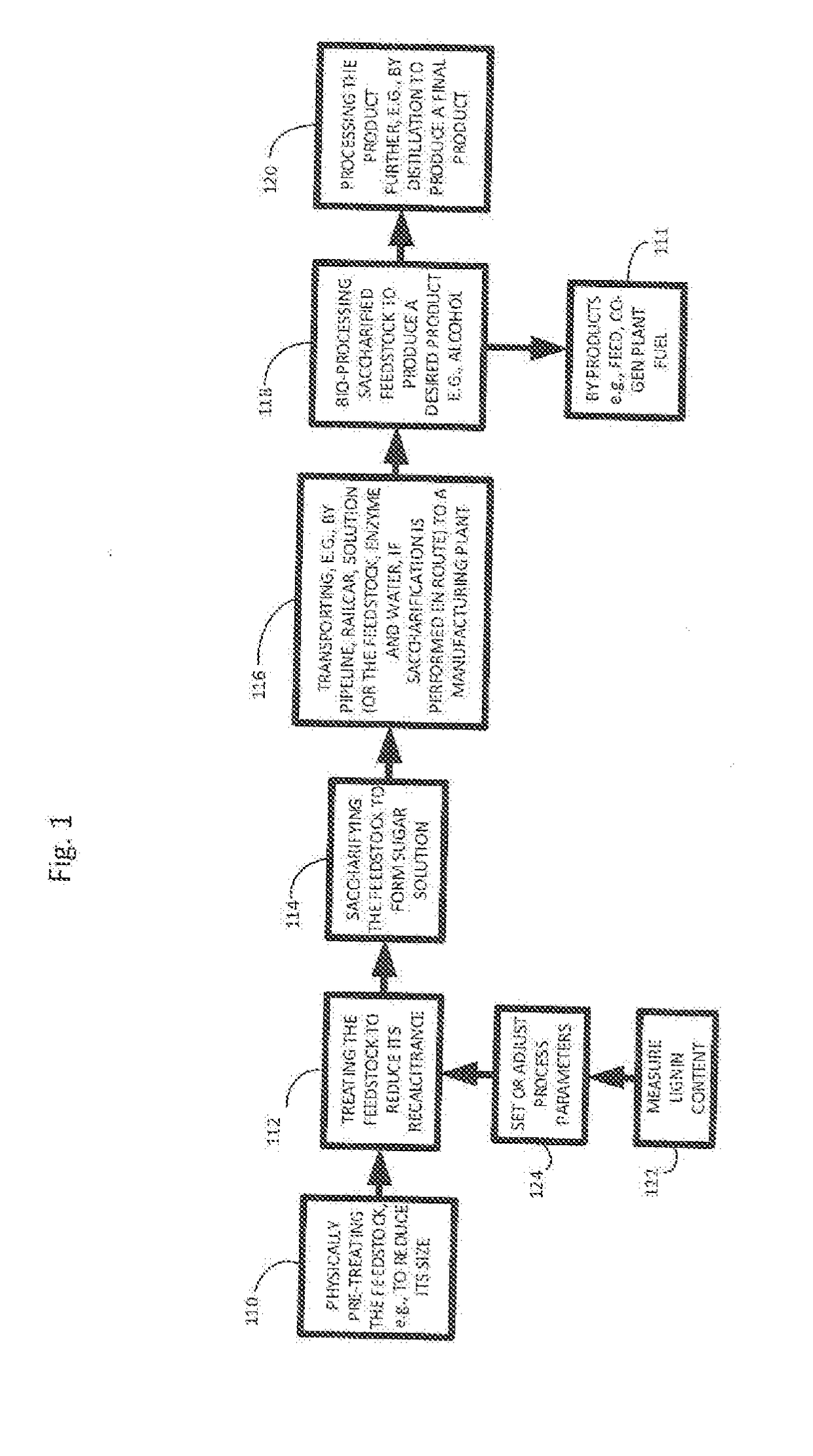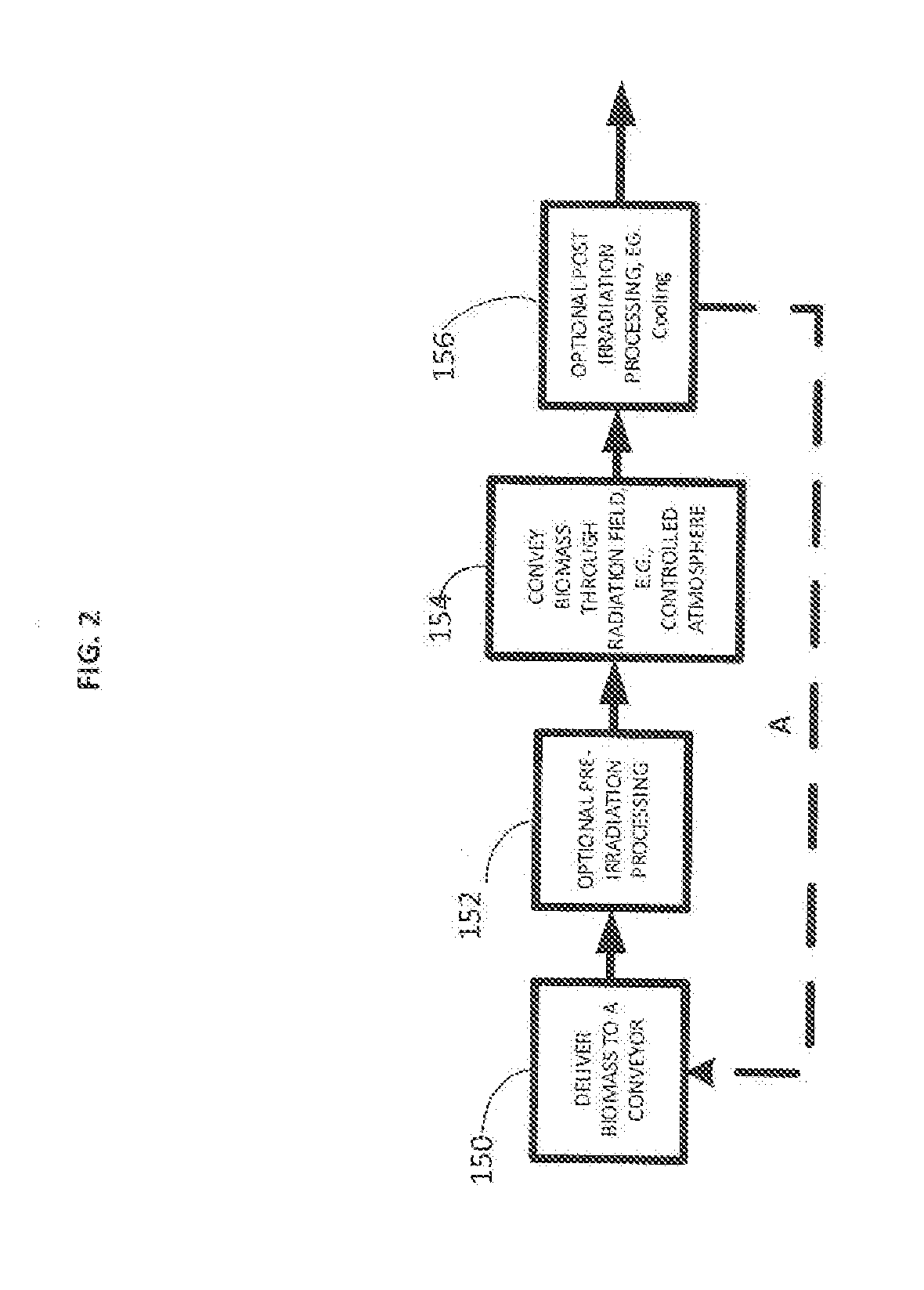Treating biomass
a technology of biomass and biomass, applied in the field of biomass treatment, can solve the problems of high cost, low yield of cellulosic materials, and difficult access to complex matrix by enzymes and other chemical, biochemical and biological processes, and achieve the effects of less downtime, reduced likelihood of primary window failure/implementation, and more robustness
- Summary
- Abstract
- Description
- Claims
- Application Information
AI Technical Summary
Benefits of technology
Problems solved by technology
Method used
Image
Examples
Embodiment Construction
[0040]Described herein is a method for irradiating biomass material, which facilitates the conversion of the material into useful products and improves the yield of those products from the biomass material. The treatment methods described herein are therefore useful in producing a biomass feedstock for use in other processes.
[0041]The methods disclosed herein can effectively lower the recalcitrance level of the biomass material, improving its utility as a feedstock in the production of useful intermediates and products. The claimed methods make the biomass material easier to process by methods such as bioprocessing (e.g., with any microorganism described herein, such as a homoacetogen or a heteroacetogen, and / or any enzyme described herein), thermal processing (e.g., gasification or pyrolysis) or chemical processing (e.g., acid hydrolysis or oxidation). Biomass material intended for use as a feedstock can be treated or processed using one or more of any of the methods described here...
PUM
| Property | Measurement | Unit |
|---|---|---|
| thick | aaaaa | aaaaa |
| thick | aaaaa | aaaaa |
| thick | aaaaa | aaaaa |
Abstract
Description
Claims
Application Information
 Login to View More
Login to View More - R&D
- Intellectual Property
- Life Sciences
- Materials
- Tech Scout
- Unparalleled Data Quality
- Higher Quality Content
- 60% Fewer Hallucinations
Browse by: Latest US Patents, China's latest patents, Technical Efficacy Thesaurus, Application Domain, Technology Topic, Popular Technical Reports.
© 2025 PatSnap. All rights reserved.Legal|Privacy policy|Modern Slavery Act Transparency Statement|Sitemap|About US| Contact US: help@patsnap.com



